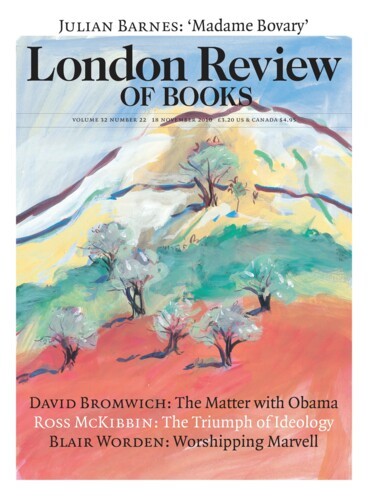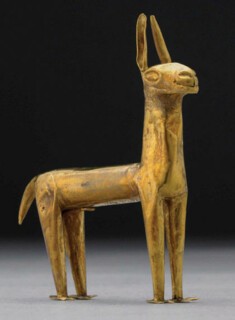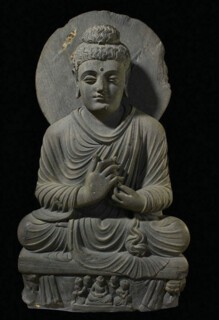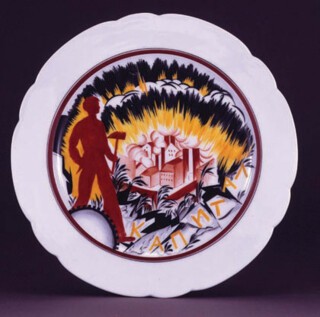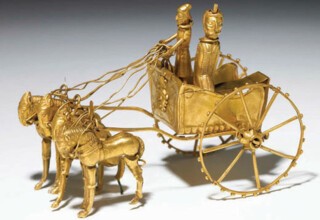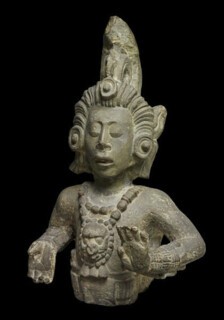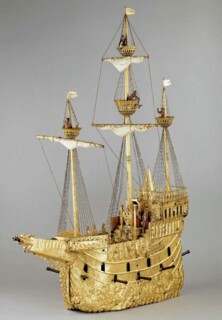It’s illegal to drive while you’re on your mobile phone, so why do galleries ask you to listen on headsets while you look at pictures? There is plenty of evidence – intuitive, anecdotal (scientific too, for all I know) – to show that concentrated listening and concentrated looking interfere with one another. Is it the money the headsets bring in? Or is it part of a general tendency for every medium to insist on a presence whenever communication takes place? It’s not that the combination never works (take Don Giovanni), but listening in the dark and looking in silence are wonderful too.
Media change faster than what is mediated. The idea of being instructed and amused by a clever person writing or talking at moderate length flourished in lecture halls and in magazines; was later adapted to radio, and eventually to television. The web sucks it up in all its forms. But this simple format – one voice and one theme, printed or spoken, directed towards a conclusion or position – often falters under the weight of illustration. Both on television and in the pages of art books images tend to drown out words. Why not let them? Well, words and images need different kinds of attention. Words tend to reduce pictures to illustrations, pictures to reduce texts to captions.
Neil MacGregor’s A History of the World in 100 Objects is a sequence of 100 short essays about things in the British Museum and what can be learned from them. The essays began as notably successful radio broadcasts and have gone on to become an illustrated book.* The narrative is in the words, not in the look of the 100 objects – you don’t, it turns out, need the objects or even pictures of them in front of you. The descriptions are often better than the illustrations when it comes to characterising the objects, partly because MacGregor has handled many of the things he describes: he can, for example, tell us that a gold coin the size of a 1p piece sits ‘quite heavily’ in the hand. The pictures are reminders of the project’s scope: there are dull things (a bark shield), playfully intricate ones (a clockwork ship that tells the time and fires cannons) and a fair number of great works of art to read about. At roughly one page of illustration to four and a half of text there is no question of treating it as a picture book. The text is what draws you on. And, of course, you dwell less on the illustrations than you might partly because you know that all the objects are in the British Museum, each in its usual place (to find them ask for the numbered plan at the information desk), but partly because the descriptions are more useful.
The short chapters are clear, many of the subjects unexpected. MacGregor acknowledges the contribution of colleagues but the voice is his, on the page as much as in the broadcasts. I imagine it is because radio dislikes the single voice as much as television dislikes the talking head that he turned from time to time to experts – scholars, artists, travellers and so on. Quite a number of these contributions don’t appear in the book, and while some of those that remain are interesting, they tend to disrupt the essay-like architecture of the chapters. Not that I would have wanted to miss Mervyn King putting the frighteners on us when considering a medieval Chinese banknote.
The format of each chapter is the same. You are told what the object is, what it looks like, very often how it was found and then, more broadly, how this tiny scrap or towering slab can become the kernel of a broad view of a time and place. The jump from the detail of a carving to the fall of empire can be exhilarating. The chapter that centres on a gold llama, only a couple of inches high, just a little bit big for a charm bracelet, is typical. From that starting description an excursion begins that situates the smiling llama (well, it seems to smile) in the Inca Empire, links it to the place of gold in the fate of South America, and moves on to Jared Diamond’s observations about the paucity of domesticable animals in the Americas and the comparative advantage of horses over the llama in war. There are descriptions of llama and other sacrifices (and thus of religion and social structure) and, in the collapse of Inca power, a regular theme: empire’s fragility.
The enterprise began with words alone; the book put them alongside pictures; in the museum (unless you are very determined – the book runs to 700 pages and is heavy) you set memories of what you heard or read against the experience of looking at the real thing. In so doing you come to realise how compendious the British Museum’s collections are, and how idiosyncratic. When you chase down the 100 objects (and I am nowhere near having paid them all a call) you sometimes find you are following a very particular trail. Go to the Edward VII Galleries and you have object 54, the gilded, nearly life-size bronze statue of Tara (700-900 AD) from Sri Lanka; 41, a seated Buddha from Pakistan (100-300 AD); 59, a Buddha head from Java (780-840 AD); 68, a stone statue of Shiva and Parvati from India (1100-1300 AD). If they were European sculptures you would be surprised to find the dates so vague, and perhaps what I read as related ways of carving and casting figures are symptoms of Orientalist blindness on my part – to admire such things is not necessarily to understand them. If you are just looking and wondering at MacGregor’s objects you might pass over a small gold coin in the same gallery, and therefore ignore the wonderful story of the Hindu king Kumaragupta’s sacrifice of a stallion, an impressive ceremony that involved a stallion, ritually purified, allowed to roam free for a year ‘followed and observed by an escort of princes, heralds and attendants. A key part of their job was to prevent it from mating: the stallion had to remain pure.’ The horse, not the king’s head, is on the coin.
Not all interesting things are beautiful and not all beautiful ones are interesting. The last two objects are a credit card and a solar-powered lamp. A number of the British Museum’s recent exhibitions and displays have emphasised world history and cultural connections – MacGregor’s 100 objects could themselves be the starting point for 100 different world histories based on the contents of the British Museum’s collections. But the myriad individuals drawn through the museum’s doors have to begin somewhere: many head to the mummies that were MacGregor’s first, childhood experience of the place. I may be snobbish about headphones, but I’m humbled by the scale of what there is to know. The marriage of objects and ideas has a touch of the old-fashioned children’s encyclopedia about it all. But I liked those too.
Send Letters To:
The Editor
London Review of Books,
28 Little Russell Street
London, WC1A 2HN
letters@lrb.co.uk
Please include name, address, and a telephone number.
